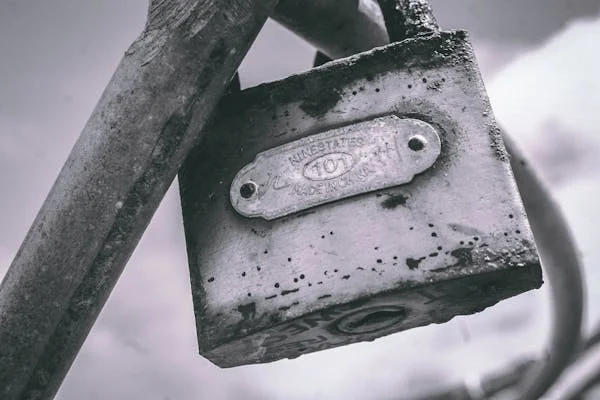Introduction
VT1000 pitting is a phenomenon that affects the integrity of metal surfaces, particularly in harsh, corrosive environments. This type of localized corrosion can cause extensive damage to equipment, making it essential for industries to understand its causes, symptoms, prevention methods, and solutions. Pitting corrosion is often invisible at first, which makes it all the more dangerous. In this article, we will explore the details of VT1000 pitting, including its underlying causes, how to detect it, and what steps can be taken to prevent and repair it.
Whether you are working in the manufacturing, marine, or aerospace industries, understanding how pitting occurs and how to address it is critical for maintaining the long-term functionality of equipment.
What Is VT1000 Pitting?
VT1000 pitting is a specific form of localized corrosion that occurs primarily in metals, especially in stainless steel and other alloys. It results in the formation of small, discrete pits or holes on the surface of the material. Unlike general corrosion, which can evenly distribute damage across a surface, pitting is localized, meaning that it only affects certain points on the material. This makes pitting corrosion particularly hazardous as it can significantly weaken the material without showing obvious signs of widespread damage.
The Mechanism of Pitting Corrosion
Pitting corrosion begins when a small flaw or imperfection in the protective oxide layer on the surface of a metal occurs. The oxide layer is a natural protection that shields metals from environmental corrosion. When this layer is disrupted, it allows corrosive agents like chlorides to penetrate deeper into the material, causing localized damage. As this process continues, small pits form, which can grow in size and depth if left unchecked.
Characteristics of VT1000 Pitting
- Localized Damage: Pitting is typically confined to small areas on the metal surface, often invisible to the naked eye.
- Depth Variation: The size and depth of pits can vary, with some being microscopic while others can be deep enough to compromise the structural integrity of the material.
- Progressive Corrosion: If not detected early, pitting corrosion can continue to grow, eventually leading to perforation or structural failure.
Common Causes of VT1000 Pitting
Understanding the underlying causes of VT1000 pitting is essential to prevent it and minimize its impact on equipment. Below are some of the primary factors that contribute to pitting corrosion:
1. Environmental Factors
Chloride Exposure
One of the most significant contributors to pitting is the presence of chloride ions. Chlorides are highly aggressive and can disrupt the passive oxide layer on metals, especially stainless steel. These ions are commonly found in seawater, de-icing salts, cleaning agents, and even atmospheric moisture. In the presence of chlorides, the protective layer can break down, leading to pitting.
High Humidity
Areas with high humidity levels increase the likelihood of pitting. Moisture in the air can combine with chlorides or other corrosive chemicals to create a corrosive environment that promotes localized damage to the metal surfaces.
Acidic Environments
The presence of acids, whether from industrial processes, atmospheric conditions, or chemical exposure, can also accelerate the breakdown of the oxide layer. Acid rain, industrial waste, and other acidic compounds often contribute to the corrosion of metals, promoting the formation of pits.
2. Material Properties
Alloy Composition
The composition of the metal used can significantly impact its susceptibility to pitting corrosion. Materials like stainless steel, which contain chromium, are more resistant to corrosion in general. However, if the chromium content is too low or the alloy is poorly formulated, it may be more prone to pitting. Adding elements like molybdenum and nitrogen can improve resistance to pitting, making alloys more suitable for harsh environments.
Surface Finish
The surface finish of a metal can affect how prone it is to pitting. A rough surface provides more opportunities for corrosive agents to accumulate, leading to localized corrosion. On the other hand, a polished surface with minimal flaws is more resistant to pitting. Regular polishing and maintenance can reduce the likelihood of pitting.
3. Operational Conditions
Temperature and Pressure
Temperature plays a critical role in the rate of pitting. Elevated temperatures increase the reactivity of corrosive agents and can accelerate the breakdown of the protective oxide layer. Similarly, high pressure in certain operational environments can place stress on the material, leading to microscopic cracks that can further facilitate pitting.
Flowing Water and Turbulence
In applications where metals are exposed to flowing liquids, such as pipes or heat exchangers, turbulent flow can increase the risk of pitting. The movement of water or other fluids can disturb the protective oxide layer and expose the metal to corrosive elements, further accelerating the process.
4. Inadequate Maintenance
Lack of Regular Inspection
One of the key contributors to the progression of VT1000 pitting is the lack of regular inspections. Since pitting occurs on a small, localized scale, it may not be immediately visible or detectable without the proper tools and techniques. Regular inspections using methods like ultrasonic testing or dye penetrant testing are essential for early detection and mitigation of pitting.
Infrequent Cleaning
Another factor that can lead to pitting is inadequate cleaning. If equipment or materials are not properly cleaned and maintained, corrosive substances like salts, acids, or other chemicals may remain on the surface and promote pitting corrosion.
Symptoms of VT1000 Pitting
Unlike general corrosion, which can affect large areas of metal uniformly, VT1000 pitting tends to be localized, meaning that the symptoms are not always immediately noticeable. However, some indicators can help you detect pitting:
Visual Indicators
- Small Holes or Craters: The most obvious sign of pitting corrosion is the appearance of small holes or craters on the metal surface.
- Loss of Surface Smoothness: A once smooth surface may begin to show small depressions or irregularities.
- Discoloration: In some cases, pitting may cause a change in the color of the metal surface, which can be a sign of corrosion beneath the surface layer.
Structural Weakness
As pitting progresses, the affected areas become structurally weaker. This can lead to equipment failure or an increased risk of stress fractures. In critical machinery or structures, the consequences can be severe.
Detection Methods
Early detection of pitting is essential to prevent further damage. Common detection methods include:
- Visual Inspection: Checking for visible pits and surface irregularities.
- Ultrasonic Testing: Using sound waves to detect thickness loss due to pitting.
- Dye Penetrant Testing: A technique used to reveal surface cracks and defects by applying a dye to the metal surface.
How to Prevent VT1000 Pitting
Preventing VT1000 pitting involves a combination of material selection, proper maintenance, and environmental controls. Here are some key strategies to prevent pitting corrosion:
1. Material Selection
Choosing the right material is one of the most effective ways to prevent pitting. Opt for alloys with higher corrosion resistance, such as duplex stainless steel, which is more resistant to chloride-induced pitting. Materials with high molybdenum content, like 316 stainless steel, are also more resistant to pitting compared to lower-grade stainless steels.
2. Environmental Controls
Avoid Exposure to Chlorides
One of the most effective ways to prevent pitting is to reduce exposure to chlorides. For equipment in marine environments, consider using coatings or protective films to shield the metal from direct exposure to seawater or salt.
Control Humidity and Temperature
Controlling environmental factors like humidity and temperature is also essential. In areas with high humidity, dehumidifiers can help reduce the risk of corrosion. Similarly, regulating temperature and pressure in industrial processes can limit the conditions that favor pitting.
3. Regular Maintenance and Inspection
Routine inspection and cleaning are critical for preventing pitting. Use advanced non-destructive testing methods, such as ultrasonic and eddy current testing, to detect hidden corrosion. In addition, ensure that cleaning procedures are regularly carried out to remove corrosive agents from surfaces.
4. Use of Protective Coatings
Applying protective coatings or passivating agents to metal surfaces can help prevent the formation of pits. These coatings create an additional barrier between the metal and corrosive elements, reducing the risk of pitting.
Solutions for Repairing VT1000 Pitting
If VT1000 pitting has already occurred, there are several ways to repair the affected areas:
1. Surface Treatment
For minor pitting, surface treatment methods like polishing or grinding can help remove the damaged material and restore the metal’s surface integrity. This is effective for small pits that have not yet caused significant structural damage.
2. Welding
In cases where the pitting has led to deeper damage, welding can be used to fill the pits and restore the material’s strength. After welding, the material should be passivated to restore its corrosion resistance.
3. Part Replacement
In cases where the damage is severe, it may be necessary to replace the affected parts entirely. This is particularly true for critical components that are vital to the operation of machinery or structures.
4. Preventative Coatings
After repair, applying a corrosion-resistant coating or passivation treatment can help prevent further pitting and extend the life of the equipment.
Conclusion
VT1000 pitting is a form of localized corrosion that can severely affect the integrity of metal equipment. Understanding the causes and early signs of pitting corrosion is essential to preventing costly damage and ensuring the longevity of equipment. By choosing the right materials, maintaining proper environmental controls, and conducting regular inspections, industries can protect themselves from the risks of VT1000 pitting.
Taking proactive steps to prevent and address pitting will help minimize downtime and maintenance costs, allowing equipment to continue functioning efficiently and reliably for years to come.






